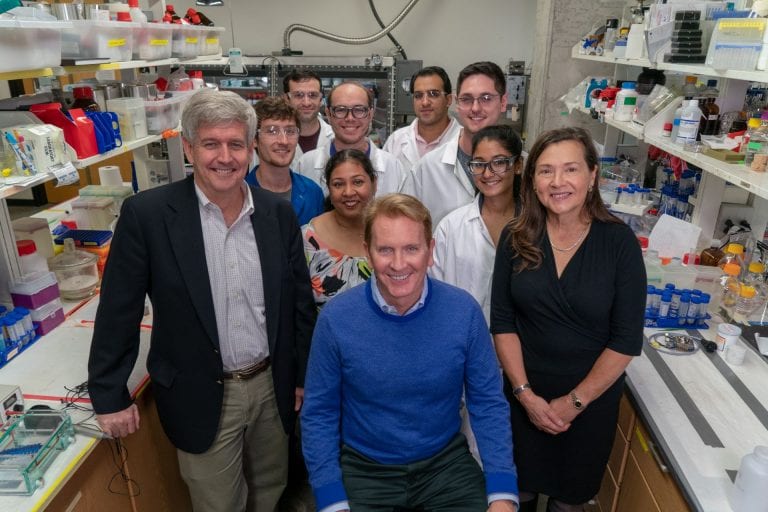When Frank Billingsley announced he had prostate cancer, the outpouring of sympathy was overwhelming. But one email among the mass of messages the chief meteorologist at KPRC-TV in Houston received stood out.
"I got this email from David Jorden’s wife, Melanie," Billingsley said. "David Jorden is the CEO of Nanospectra," a Houston-based company conducting a clinical trial of a nanoparticle-based cancer treatment developed at Rice University.
Billingsley had never heard of the treatment developed in the same city where he’s been a popular television personality for almost three decades. His reaction: "Wow, this is really out there, but I would like to at least know about it."
Maybe it seemed "out there" to Billingsley, but it’s long been a quest of Rice University engineer and nanoscientist Naomi Halas — to develop a treatment that destroys tumors without the debilitating side effects of chemotherapy, invasive surgery and radiation.
In November 2018, Billingsley received a nanoparticle infusion and underwent a laser ablation procedure the next day as part of a clinical trial at the University of Texas Health Science Center in Houston. An MRI the next week showed no signs of cancer.
"The nanoparticles are special in that you can design a nanoparticle to absorb light at wavelengths that pass directly through the body," Halas said. "So if the particles are placed in a tumor site, you can irradiate them with light that penetrates through the body. And the nanoparticles will absorb the light, convert the light to heat and very gently they will induce hyperthermia and destroy just the tumor cells."

The particles, tiny silica spheres with a thin outer layer of gold, are called nanoshells. They are about 50 times smaller than a red blood cell, and Halas invented them at Rice in 1997. By varying the thickness of the gold shell, Halas had shown she could tune nanoshells to interact with specific wavelengths of light. Around 2000, she and Duke University bioengineer Jennifer West invented a method of destroying cancer cells by heating nanoshells with a low-power, near-infrared laser that could pass harmlessly through healthy tissue.
The work garnered national awards and press coverage, and by the early 2000s Halas and West had co-founded a Houston-based startup, Nanospectra Biosciences, to develop the technology for clinical use.
In August 2019, the cancer therapy crossed a clinical trial milestone. Thirteen of the first 15 prostate cancer patients treated in a clinical trial of the nanoparticle-based, focal therapy showed no detectable signs of cancer a year after treatment, according to a study in the Proceedings of the National Academy of Sciences (PNAS).
The paper presents the results from 16 patients who were treated at the Icahn School of Medicine at Mount Sinai in New York. It is believed to be the first published clinical study of a photothermal cancer therapy — one that uses illuminated nanoparticles to heat and destroy tumors.
In the study, 16 men ages 58 to 79 with low- to intermediate-risk localized prostate cancer agreed to participate in a trial of AuroLase Therapy, a focal ablation treatment that uses gold nanoparticles to heat and destroy tumors. Fifteen of the 16 patients underwent the two-day treatment, receiving an intravenous infusion of nanoparticles on day one and undergoing an image-guided ablation treatment on day two. All of the patients went home on the day of the treatment and returned for follow-up tests at three months, six months and one year after treatment. Of the 15 who completed treatment, only two showed detectable signs of cancer in follow-up biopsies and MRIs one year later.
"There’s a bigger picture here," Halas said. "This (study) is 16 men, but when does it get to be 16,000? Sixteen million? Because 1 in 9 men are going to have to deal with this in their lifetime. The thought that this treatment could alleviate side effects and misery is truly heartwarming."


